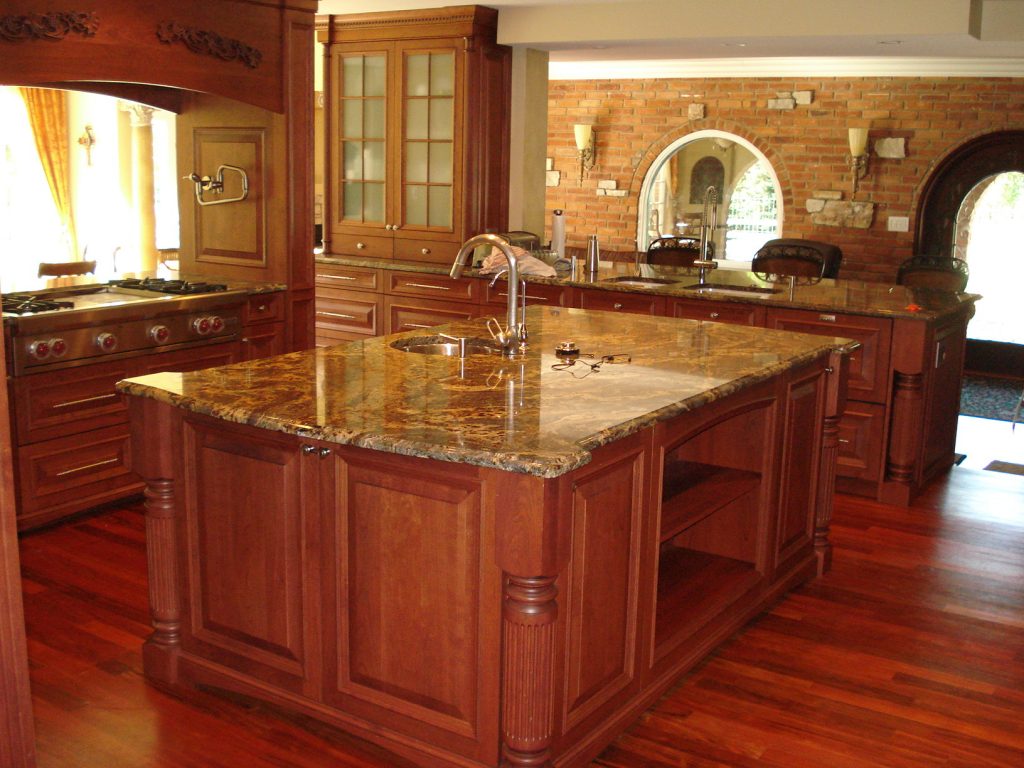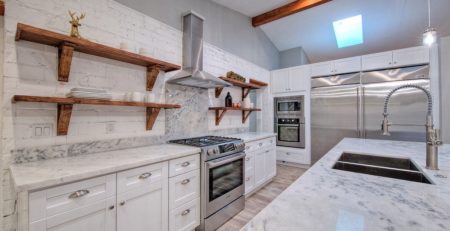Care and Cleaning
Do’s and Dont’s
DO Dust mop floors frequently
DO Clean surfaces with mild detergent or stone soap
DO Thoroughly rinse and dry the surface after washing
DO Blot up spills immediately
DO Protect floor surfaces with non-slip mats or area rugs and countertop surfaces with coasters, trivets or placemats
DON’T Use vinegar, lemon juice or other cleaners containing acids on marble, limestone, travertine or onyx surfaces
DON’T Use cleaners that contain acid such as bathroom cleaners, grout cleaners or tub & tile cleaners
DON’T Use abrasive cleaners such as dry cleansers or soft cleansers
DON’T Mix bleach and ammonia; this combination creates a toxic and lethal gas
DON’T Ever mix chemicals together unless directions specifically instruct you to do so
Use coasters under all glasses, particularly those containing alcohol or citrus juices. Many common foods and drinks contain acids that will etch or dull the surface of many stones. Do not place hot items directly on the stone surface. Use trivets or mats under hot dishes and placemats under china, ceramics, silver or other objects that can scratch the surface.
Cleaning Procedures and Recommendations
Floor Surfaces
Dust mop interior floors frequently using a clean non-treated dry dust mop. Sand, dirt and grit do the most damage to natural stone surfaces due to their abrasiveness. Mats or area rugs inside and outside an entrance will help to minimize the sand, dirt and grit that will scratch the stone floor. Be sure that the underside of the mat or rug is a non-slip surface. Normally, it will take a person about eight steps on a floor surface to remove sand or dirt from the bottom of their shoes. Do not use vacuum cleaners that are worn. The metal or plastic attachments or the wheels may scratch the surface.
Other Surfaces
Clean stone surfaces with a few drops of neutral cleaner, stone soap (available at hardware stores or from your stone dealer) or a mild liquid dishwashing detergent and warm water. Use a clean rag mop on floors and a soft cloth for other surfaces for best results. Too much cleaner or soap may leave a film and cause streaks. Do not use products that contain lemon, vinegar or other acids on marble or limestone. Rinse the surface thoroughly after washing with the soap solution and dry with a soft cloth. Change the rinse water frequently. Do not use scouring powders or creams; these products contain abrasives that may scratch the surface.
Bath and Other Wet Areas
In the bath or other wet areas, soap scum can be minimized by using a squeegee after each use. To remove soap scum, use a non-acidic soap scum remover or a solution of ammonia and water (about 1/2 cup ammonia to a gallon of water). Frequent or over-use of an ammonia solution may eventually dull the surface of the stone.
Vanity Top Surfaces
Vanity tops may need to have a penetrating sealer applied. Check with your installer for recommendations. A good quality marble wax or non-yellowing automobile paste wax can be applied to minimize water spotting.
Food Preparation Areas
In food preparation areas, the stone may need to have a penetrating sealer applied. Check with your installer for recommendations. If a sealer is applied, be sure that it is non-toxic and safe for use on food preparation surfaces. If there are questions, check with the sealer manufacturer.
Outdoor Pool & Patio Areas
In outdoor pool, patio or hot tub areas, flush with clear water and use a mild bleach solution to remove algae or moss.





